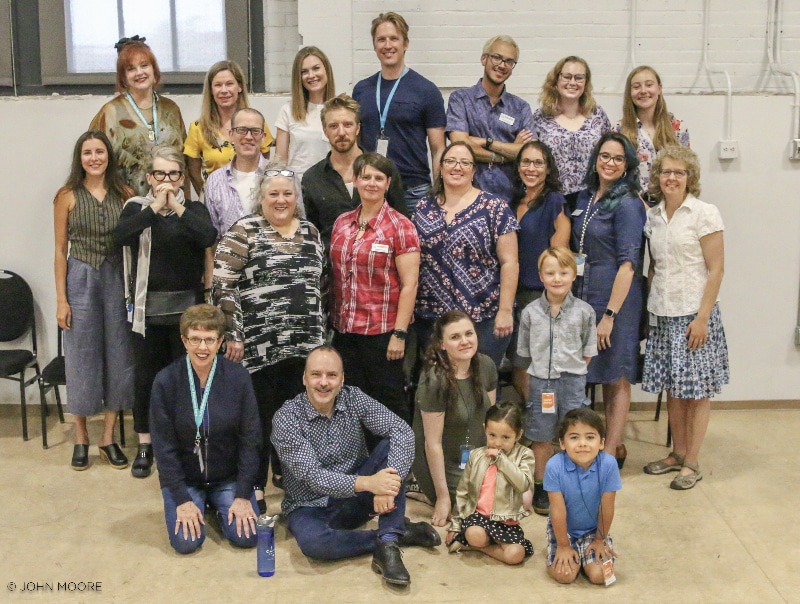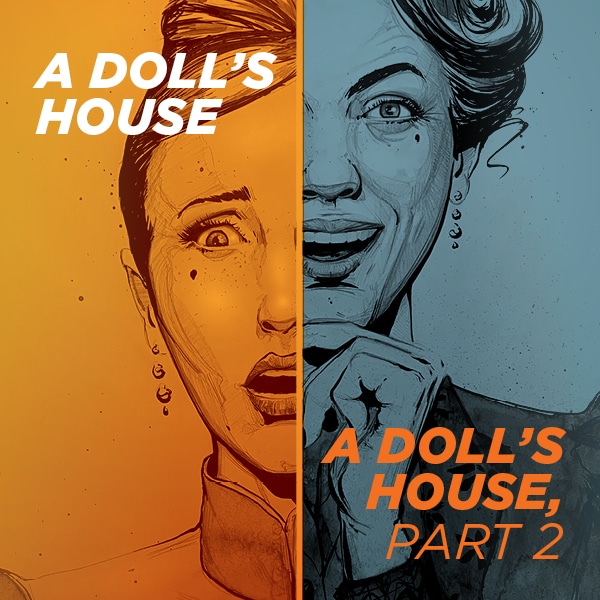DCPA NEWS CENTER
Enjoy the best stories and perspectives from the theatre world today.
Enjoy the best stories and perspectives from the theatre world today.
This article was published on August 5, 2019

The cast and creatives for the DCPA Theatre Company’s groundbreaking repertory stagings of ‘A Doll’s House’ and ‘A Doll’s House, Part 2’ at first rehearsal last week. Photo by John Moore.

The DCPA Theatre Company’s two Noras: Barbra Wengerd, left, and Marianna McClellan. Photo by John Moore.
A Doll’s House, with its door slam heard ’round the world, is regarded by many as the beginning of modern feminist literature. Which begs the question: How did a Norwegian man ever find himself in the unexpected position of being one of the world’s earliest feminist authors?
The answer is: Hard life experience.
DCPA Theatre Company Artistic Director Chris Coleman told the story last week as cast and crew gathered for the first time to prepare for the first repertory staging of Henrik Ibsen’s masterpiece and Lucas Hnath’s contemporary sequel, A Doll’s House, Part 2.
Ibsen was born in 1828 into a well-to-do merchant family in the small port town of Skien, Norway. But when Henrik was around 7 years old, his father was financially ruined, and the family had to move into a small summer house outside the city, placing a great strain on his mother, Marichen Altenburg.
Ibsen modeled many of his female characters after his mother, whom he considered to be the soul of the house. She sacrificed everything for her husband and children without bitterness or reproach. The sympathetic portrayal of suffering women became a central theme in Ibsen’s plays, most notably in A Doll’s House and Hedda Gabler.
Ibsen was forced to drop out of school at 15. Three years later, he had a sexual liaison that got a young woman pregnant. Though Ibsen never saw his son, he paid for the boy’s upbringing until was 14. But not by choice.
“He was hounded by legal authorities to pay his fair share for this child’s upkeep,” said Coleman, who is directing A Doll’s House. “But he did not have two nickels to rub together. He was actually sentenced to prison for 68 days for being late in his child support.”
The shame surrounding that event haunted Ibsen his entire life. But he remained largely conventional in his thinking about women until a couple of years before he wrote A Doll’s House in 1879. What changed after 20 years of writing? “He encountered some very strong, progressive women who challenged his thinking,” Coleman said. “A Doll’s House became a real reflection point for him on multiple levels.”
At the time, it was illegal for a woman to take out a loan – a central plot point in A Doll’s House. Ibsen and his wife were friends with a real-life couple who found themselves in the same situation as Ibsen’s fictional Nora and Torvald. “The wife had secretly taken out a loan to help her husband, and when the husband found out about it, he said, ‘She’s a criminal – and she needs to go to jail,’ ” Coleman said. “Ibsen was so fascinated by that response that he started to imagine his way into Nora’s situation in the play.”
Around this time, the great thinkers of the day began considering “The Woman Question.” Ibsen started to think about how challenging it was for women in marriages where they had no legal rights. “And in fact when Nora leaves the house at the end of the play, she absolutely would have known she had no legal recourse to get her kids. None,” Coleman said.
“The story of A Doll’s House is that of a woman who thinks she’s in a perfect marriage. Like most good, middle-class 19th century women, she has devoted her life to making her children and her home perfect. That is what society has told her is her responsibility. When Nora sacrifices on behalf of her husband, she does so knowing that when push came to shove, he would do the same for her. And when she finds out that, indeed, that is not who he is at his core, she realizes her marriage is a lie. At that moment, she doesn’t know who he is – and she has no idea who she is. So she walks out the door.”
 Ticket information
Ticket information
